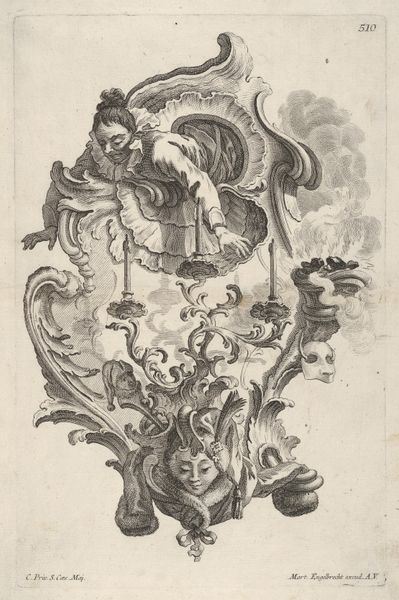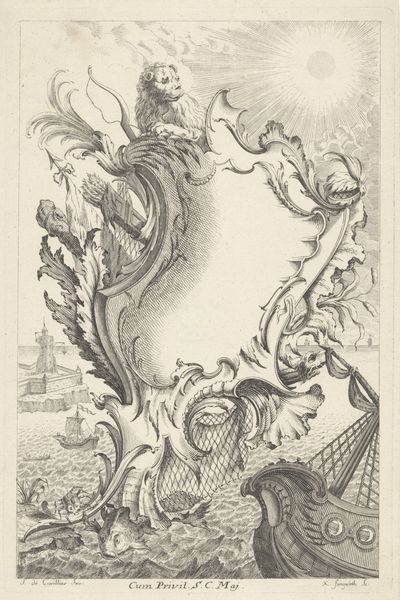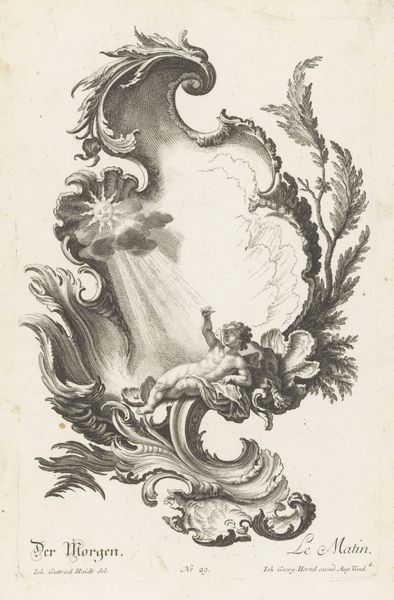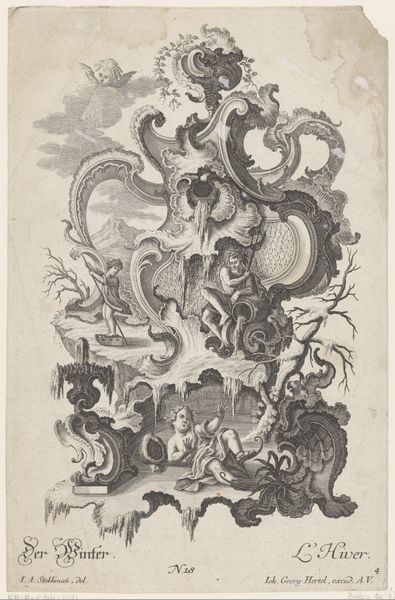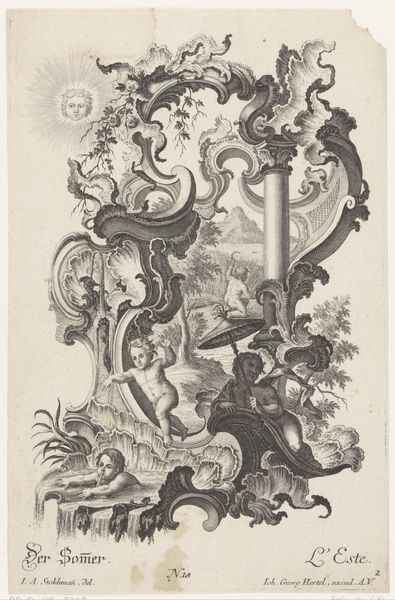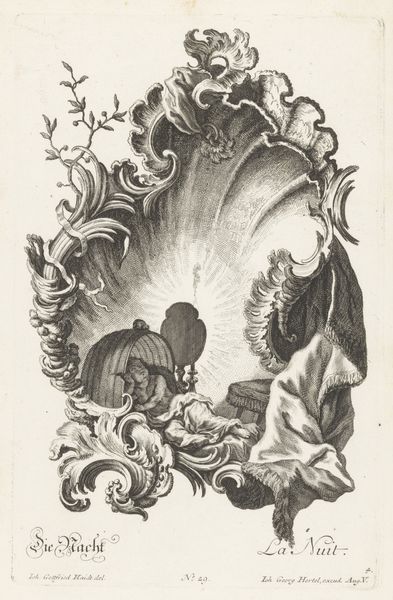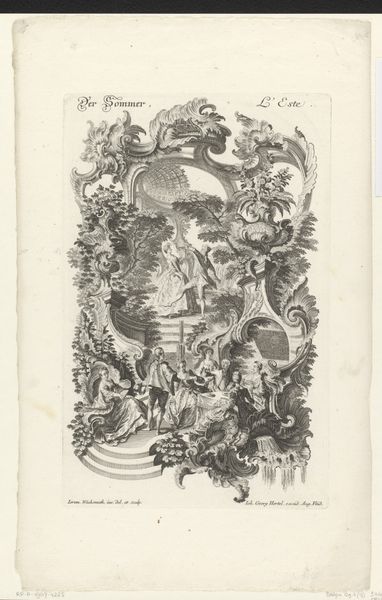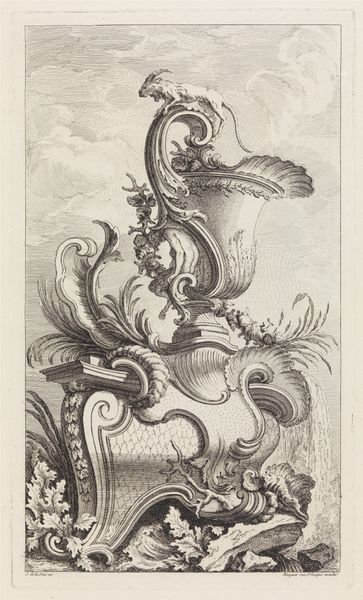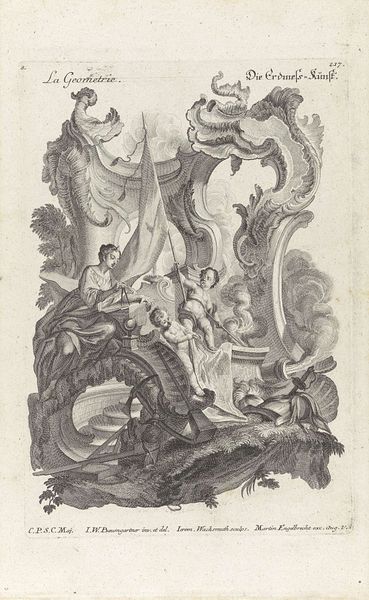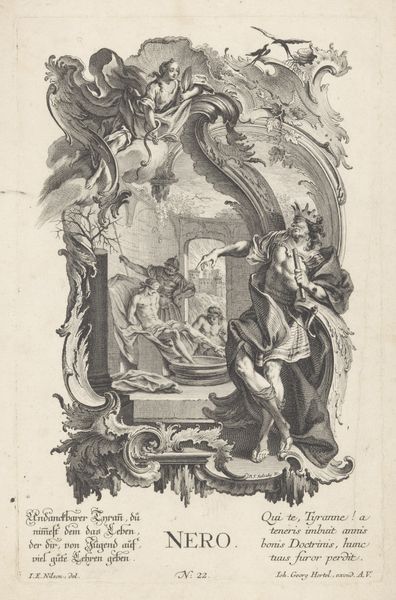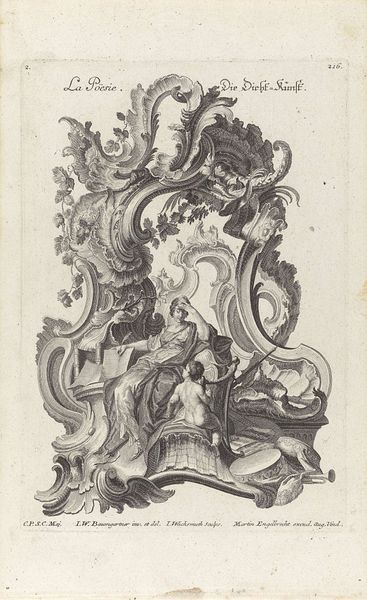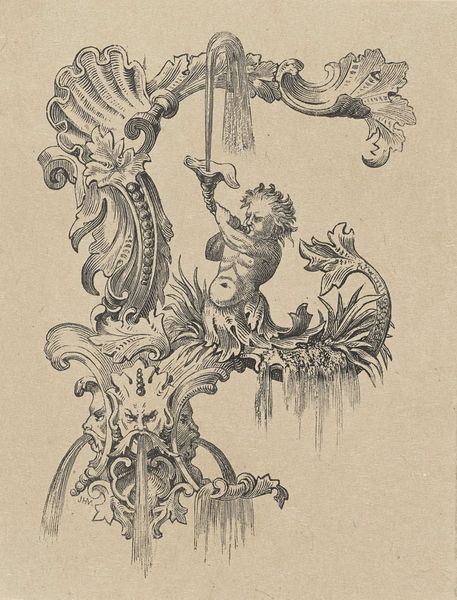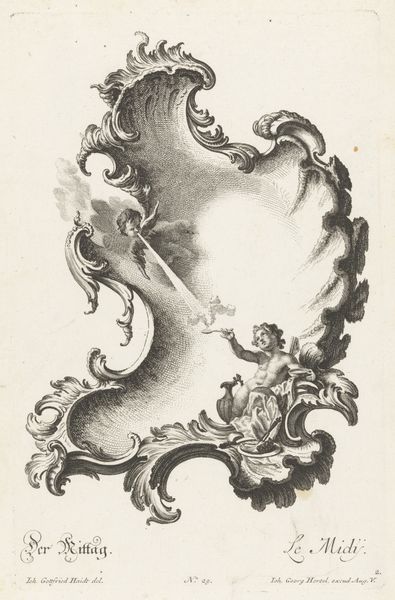
Sconce Representing Summer, from 'Wand-Leuchter die 4 Jahrseiten vorstellend' 1730 - 1756
0:00
0:00
drawing, print
#
drawing
#
allegory
# print
#
rococo
Dimensions: Plate: 11 9/16 × 7 9/16 in. (29.4 × 19.2 cm)
Copyright: Public Domain
Curator: This image, titled 'Sconce Representing Summer, from 'Wand-Leuchter die 4 Jahrseiten vorstellend',' comes to us from the mid-18th century, placing it squarely in the Rococo period. It’s a print and drawing by Martin Engelbrecht, now held at the Metropolitan Museum. Editor: Oh, it's dreamy! That reclining figure draped across what looks like a very ornate light fixture. There's an almost languid quality to the lines and composition. What do you make of her gaze? Curator: She seems to be contemplating something profound, or perhaps she’s simply basking in the glow of candlelight! What intrigues me is the allegorical nature of this piece. This is not just decoration, it’s loaded with symbolism. Summer, right? With its visual cues… Editor: Exactly! The woman, with the headdress or wide-brimmed hat – maybe even an early parasol. She's adorned with wheat, naturally— the harvest season. But tell me, where do you think this fits into the societal structures of its time? Sconces weren't exactly for everyone, were they? Curator: Certainly not! A print like this was likely intended for the upper classes. It’s an aspirational piece, showing off the kind of elegant decor that was becoming fashionable. There’s also something performative in the design; these sconces, which is the subject of the picture, are symbols of social status. The implication being, those of high-status and leisure need light. Editor: Which reminds me about what Judith Butler said about gender performativity: that performing the habits associated with being a woman and having a female body can have political consequences because they create what we perceive as "natural." In this context, Engelbrecht is crafting both the *look* of summer and gender with the very trappings and markers that come to signal not just elite status, but a moment in time and history! Curator: Beautifully said! So, through what appears to be merely a decorative print, Engelbrecht invites us to reflect on beauty, aspiration, and the performance of social identity during the height of the Rococo era. Editor: Absolutely! It's a glimpse into a world both lavish and deeply considered, where even a sconce can spark profound questions.
Comments
No comments
Be the first to comment and join the conversation on the ultimate creative platform.
